Finding agates in Iowa may not be the first place that comes to mind but the state is full of agates that make every trip outdoors a little more exciting. Along riverbanks, gravel pits, and glacial deposits you can discover stones with swirling patterns and bright colors hidden just beneath the surface.
Some sparkle with bands of red and orange while others show soft shades of gray, white, or blue. Each one is a natural work of art shaped over thousands of years.
Searching for agates in Iowa is part adventure and part science lesson because every find tells a story about the land’s history. All you need is a sharp eye, a little patience, and a sense of curiosity.
If you are ready to learn the best places to look and how to spot these hidden treasures, keep reading and start your own Iowa agate hunt.
What is Iowa Agate?

Agate is a type of chalcedony, which is a type of quartz with tiny crystals. It is a semiprecious gemstone prized for its beautiful colors and patterns. Agates are made by a long, complicated process that takes millions of years.
Most of the time, they start as holes or bumps in volcanic or sedimentary rocks. As silica-rich groundwater seeps into these holes, the silica slowly settles out and forms layers, giving agates their distinctive banding or concentric patterns.
Agates get their colors and patterns from impurities and minerals that were there when they formed, like iron oxide, manganese, and other trace elements.
Find out how much agates cost by reading our article.
Blue Lace Agate
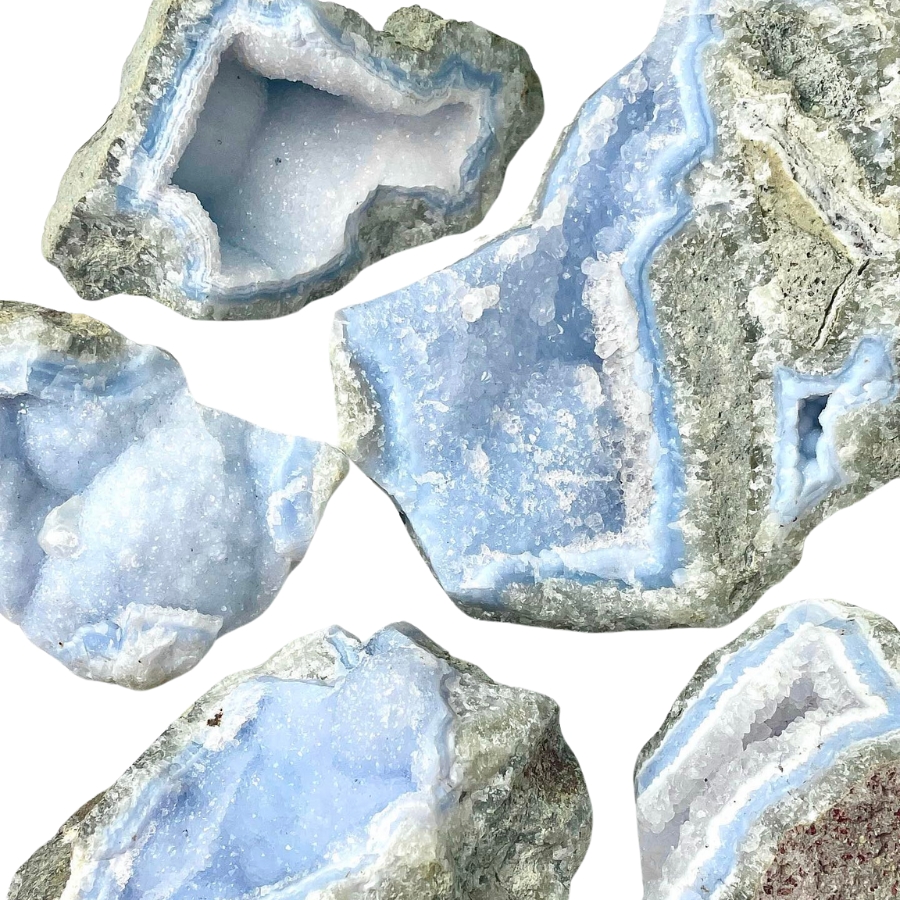
Blue lace agate is like the soft, sky-blue waves with lines that swirl and twist like delicate lace.
Its pattern comes from slow-forming layers of quartz, which create those beautiful, lace-like bands.
The bands of this agate type are often in shades of light blue, white, and sometimes a bit of grey. It’s different from other agates, which usually have more intense colors and stronger patterns.
The value of blue lace agate lies in its soft, tranquil look and the feeling of calm it brings. It’s often used in jewelry or as a decorative stone.
If you want REAL results finding incredible rocks and minerals you need one of these 👇👇👇
Finding the coolest rocks in isn’t luck, it's knowing what to look for. Thousands of your fellow rock hunters are already carrying Rock Chasing field guides. Maybe it's time you joined the community.
Lightweight, mud-proof, and packed with clear photos, it’s become the go-to tool for anyone interested discovering what’s hidden under our red dirt and what they've already found.
Join them, and make your next rockhounding trip actually pay off.
What makes it different:
- 📍 Find and identify 140 incredible crystals, rocks, gemstones, minerals, and geodes across the USA
- 🚙 Field-tested across America's rivers, ranchlands, mountains, and roadcuts
- 📘 Heavy duty laminated pages resist dust, sweat, and water
- 🧠 Zero fluff — just clear visuals and straight-to-the-point info
- ⭐ Rated 4.8★ by real collectors who actually use it in the field
Moss Agate
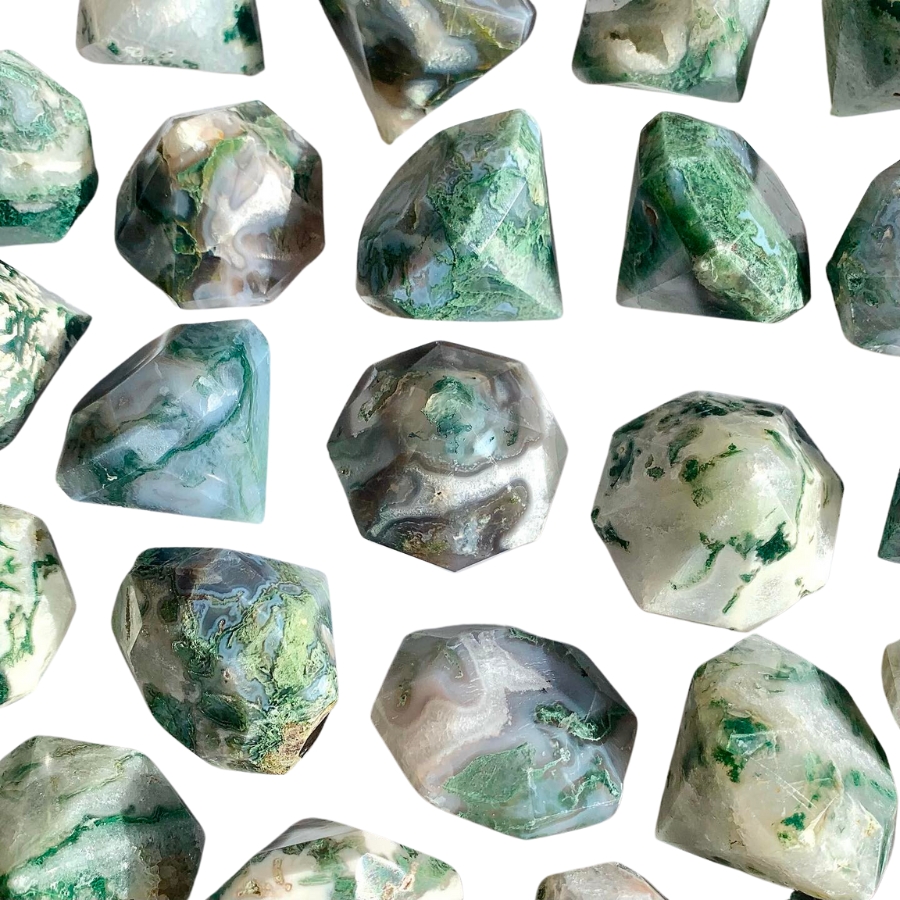
Instead of having the typical banding for which the different types of agates are known, moss agate has green inclusions that look like moss or trees.
These green patterns aren’t real plant material, though. They’re minerals like chlorite or iron oxide.
In some cultures, this type of agate is known as the “gardener’s stone” because of its green, plant-like appearance. It’s believed to help plants grow.
The price of moss agate can vary. It’s often quite affordable, but the more distinct and picturesque the green patterns, the more it might cost.
Fire Agate
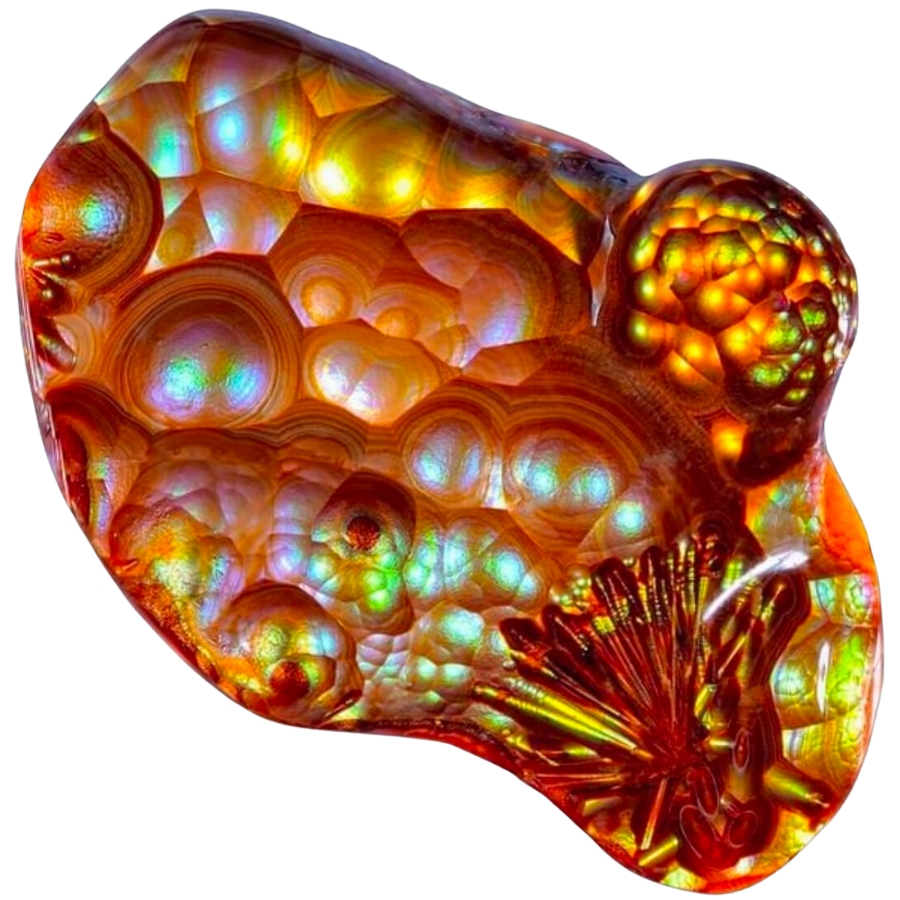
Fire agate is known for its incredible colors and the way it sparkles like fire. It’s got layers of silica and iron oxide that reflect light, creating a fiery effect.
When you look at fire agate, it’s like seeing flames trapped inside. Its colors can range from reds and oranges to greens and golds, all shimmering under the surface.
You might be wondering, “What is fire agate worth?” Well, its value comes from its rare beauty. The more color and sparkle, the more valuable the stone is.
Its fiery iridescence and lively play of color are used in jewelry pieces that are meant to stand out.
Dendritic Agate
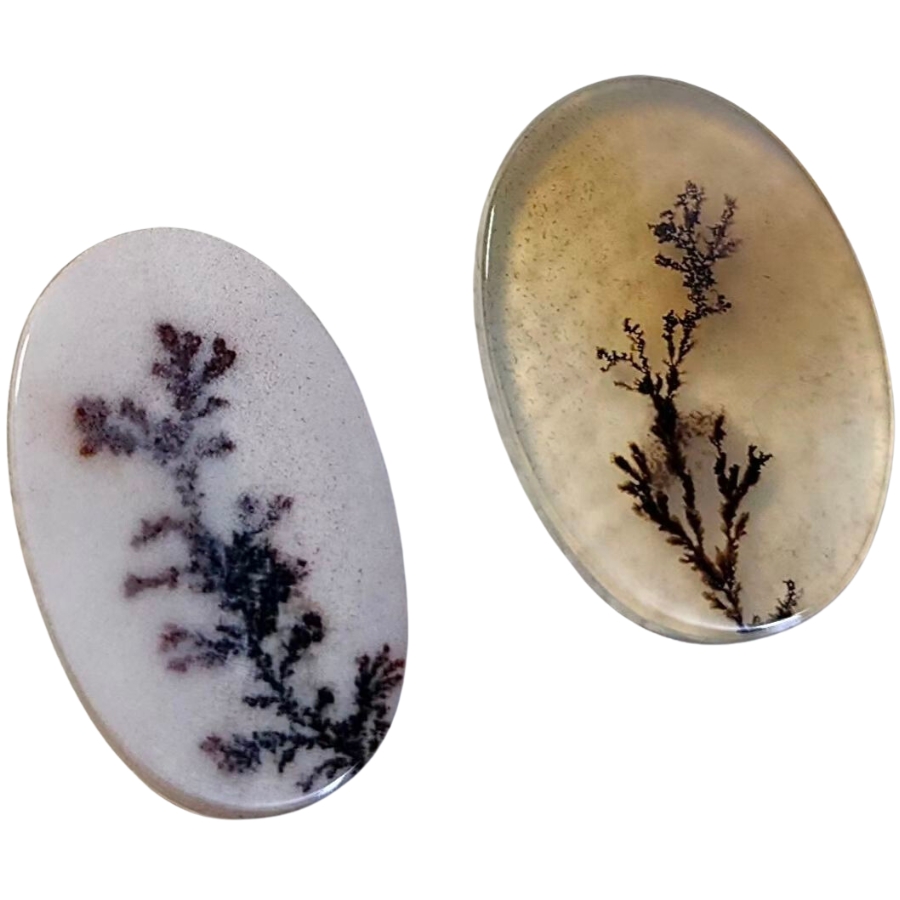
Dendritic agate is known for patterns that look like tiny trees or shrubs. Like moss agate, these patterns aren’t actual plants. They’re made of minerals, mostly manganese or iron oxides.
When you look at a dendritic agate, it’s like peering into a miniature forest or a frosty winter landscape.
The base of the stone is usually translucent to opaque, and the “dendrites”— those tree-like patterns— are often black or brown.
When it comes to how much dendritic agate is worth, it can vary. The more detailed and distinct the patterns are, the more it’s usually valued.
In some cultures, dendritic agate is believed to bring fullness and richness to life.
Crazy Lace Agate
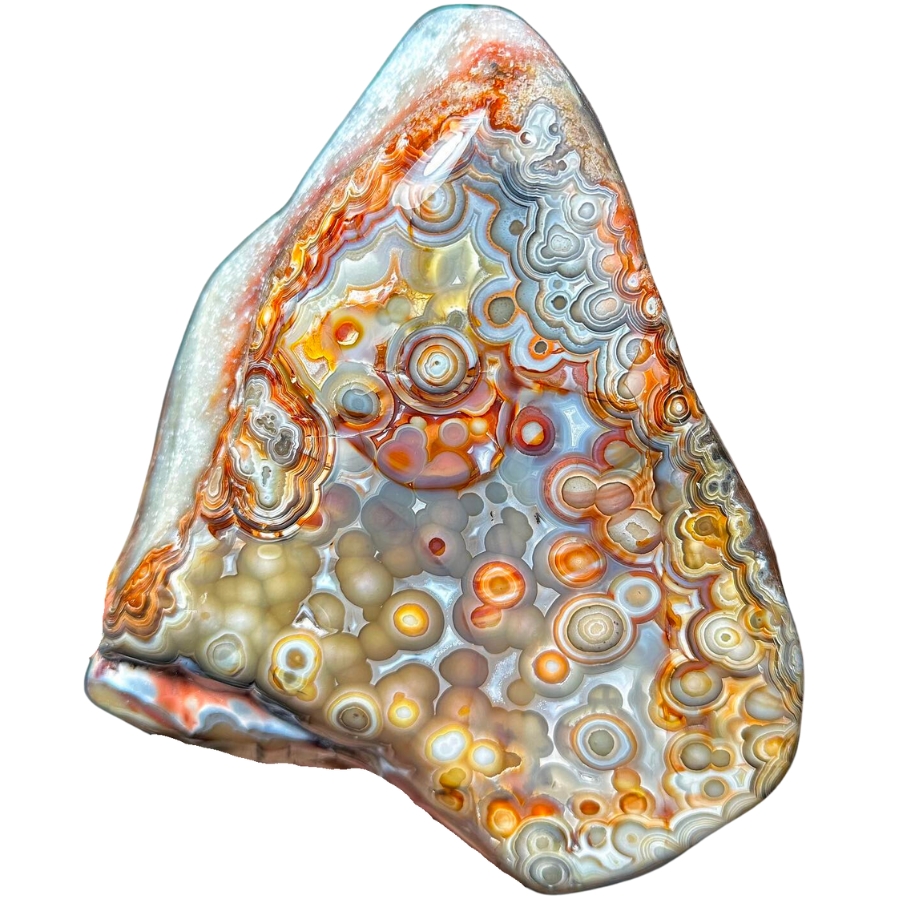
Crazy lace agate is like a party in a rock! It’s got swirls, circles, and all sorts of wild patterns dancing across it.
Its colors can be a mix of red, orange, yellow, and brown, and sometimes even a bit of gray or white.
What makes crazy lace agate stand out is its vibrant and complex patterns. No two pieces are the same. This distinctiveness is a big reason why it’s so valued.
Despite its wild and ‘crazy’ appearance, it’s sometimes called the “Laughter Stone” or “Happy Lace” because of the joy and positive vibes it’s believed to bring.
Laguna Agate

Laguna agate has incredibly sharp and fine banding. It has layers of red, orange, pink, yellow, and sometimes even purple and white all stacked in neat, tight bands.
These bands can form eye-catching patterns, like swirls, loops, and even landscapes.
The different colors of its bands come from various minerals present in the water at the time of its formation.
Laguna agate is considered one of the finest agates in the world due to its exceptional banding. This high regard among agate varieties makes it a prized possession for collectors.
Condor Agate

Condor agate is a real standout. It’s known for its bright, vivid colors and complex patterns.
It has reds, oranges, yellows, and sometimes even blues and greens all swirling together. These colors form in bands or in more random, artistic patterns.
The intensity and variety of its colors is what makes condor agate so special. It’s often used by artists and craftsmen who want to make a statement with their work.
Condor agate’s bold colors and patterns can turn a simple piece of jewelry or art into something really eye-catching.
Fortification Agate (Banded Agate)
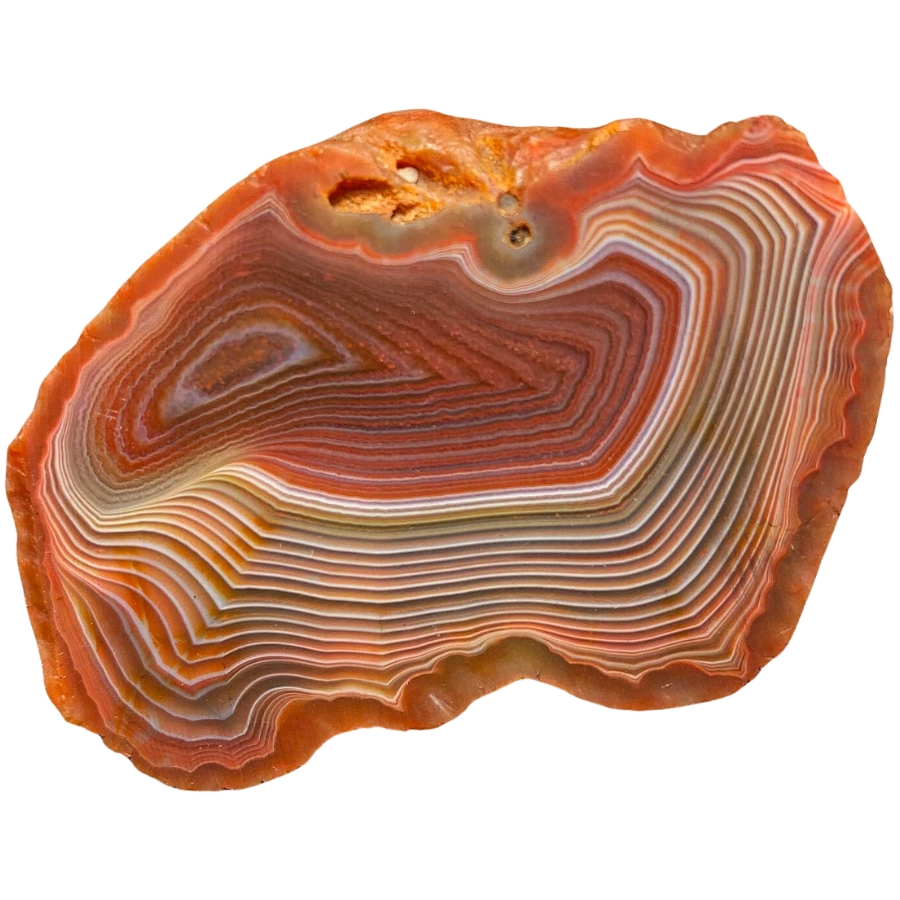
Fortification agate gets its name because the patterns inside it look like the aerial view of a fortified city.
Imagine seeing bands of color forming shapes that look like walls, with sharp angles and curves. They are usually in different colors, making each layer stand out.
If fortification agate is valuable, it’s because of its distinct patterns and colors. Its unique look makes it sought after for jewelry and as a collector’s item.
The clearer and more defined the patterns, the more valuable the stone can be. Some people also believe it can help with relaxation and calmness.
Iris Agate
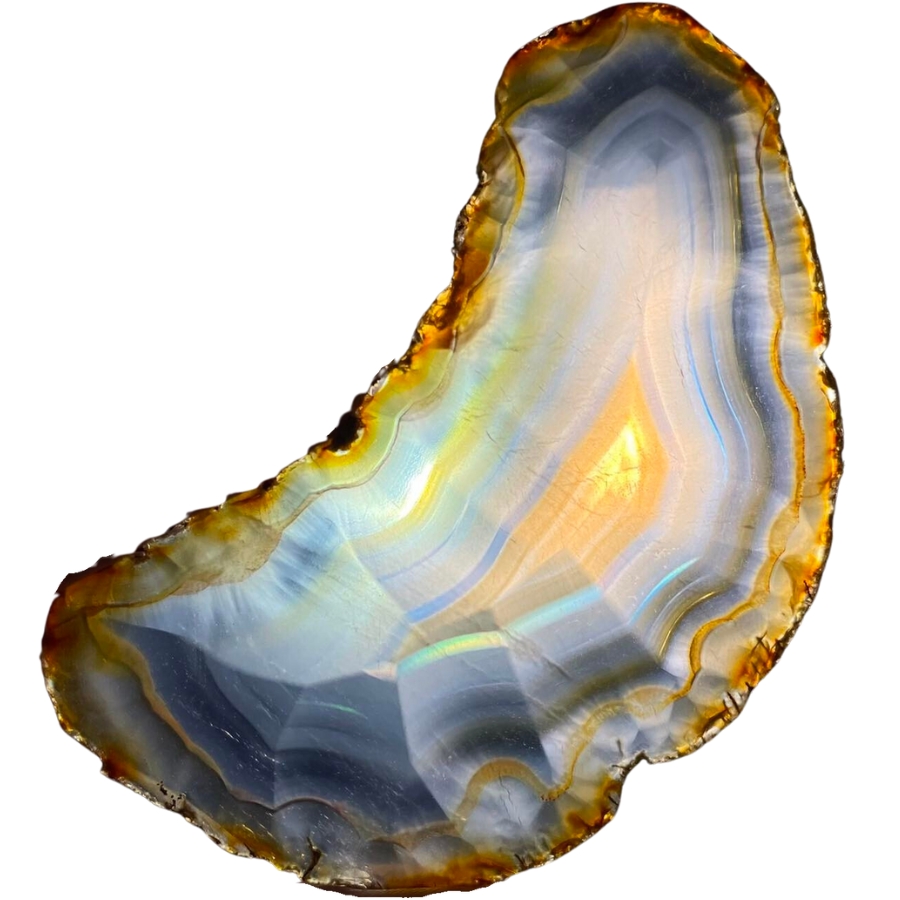
Iris agate looks like a regular agate at first, but when you hold it up to the light, something amazing happens. It shows all these rainbow colors, like light passing through a prism.
This is because it has very thin layers of silica, and when light hits these layers, it splits into all the colors of the rainbow.
The formation of iris agate is similar to other agates, but its layers are super thin, which is what creates the rainbow effect.
The value of iris agate comes from its unique ability to show these colors. In the past, people even used to think it had magical properties because of the way it showed colors. They saw it as a stone of good luck and wonder.
Plume Agate
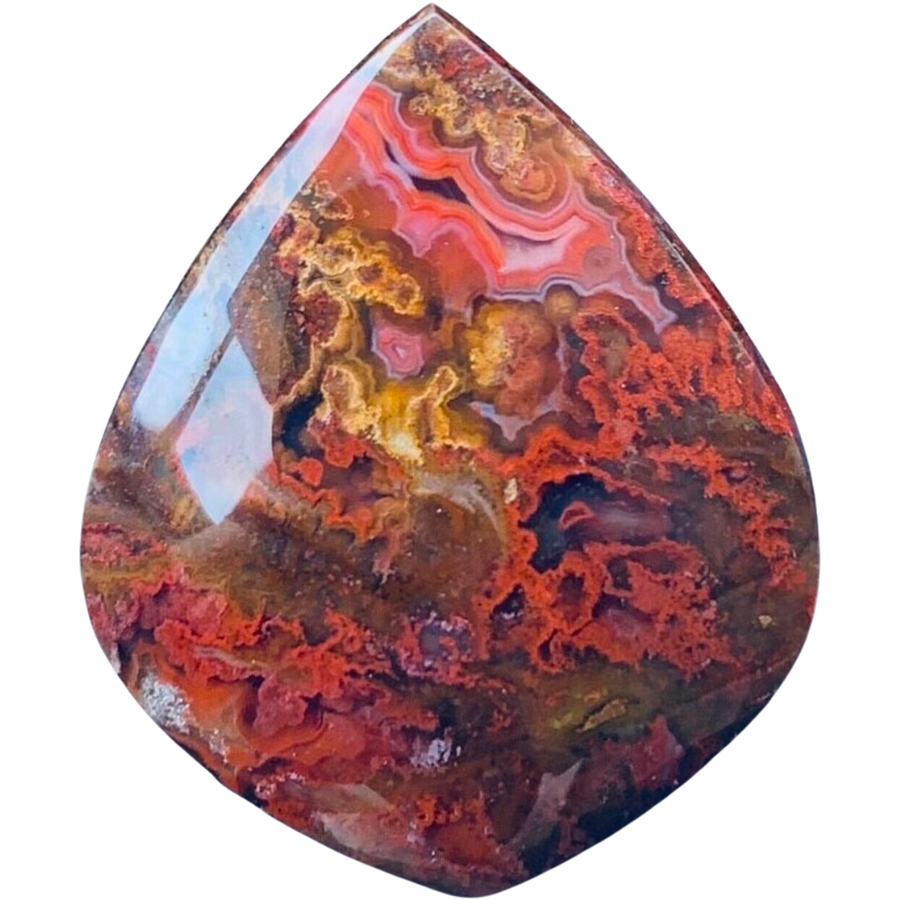
Plume agate gets its name from its patterns that look like soft, feathery plumes. These plumes can be in all sorts of colors: red, black, green, or yellow, set against a translucent or opaque background.
The way these plumes seem to float in the stone makes it look like a frozen underwater scene or like feathers caught in a breeze.
The plumes are made of minerals like manganese or iron oxide, which get trapped in the silica during the agate’s formation and create the feathery patterns.
The price of plume agate can vary depending on how clear and intricate the patterns are. The more detailed and colorful the plumes, the more the stone is usually worth.
Picture Agate (Scenic Agate)
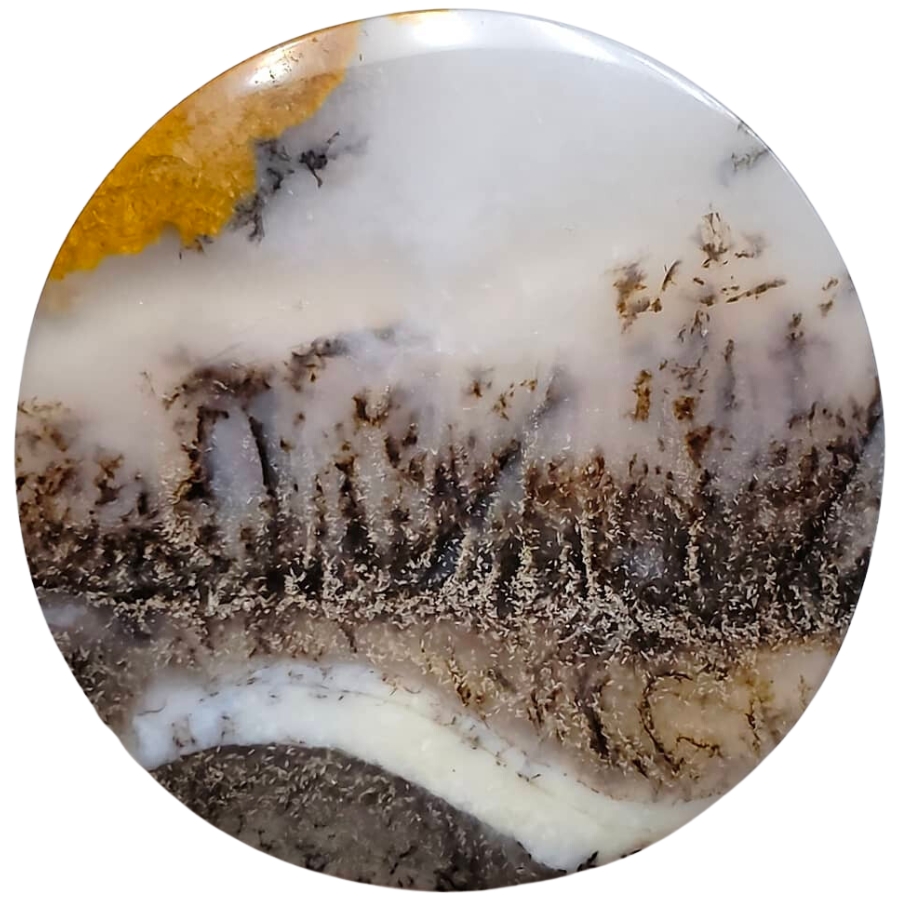
Picture agate is like a snapshot of nature captured in stone because it looks like it has pictures or scenes right inside it.
These “pictures” are actually natural patterns that resemble landscapes, mountains, trees, or even skies. They are usually in different shades of brown, white, and gray against a more translucent background.
The different patterns in picture agate or what’s also called scenic agate are made by various minerals in the water filled with silica that forms it.
If you’re thinking, “What is picture agate worth?“, its value comes from how distinct, clear, and detailed the natural “pictures” are.
Turritella Agate
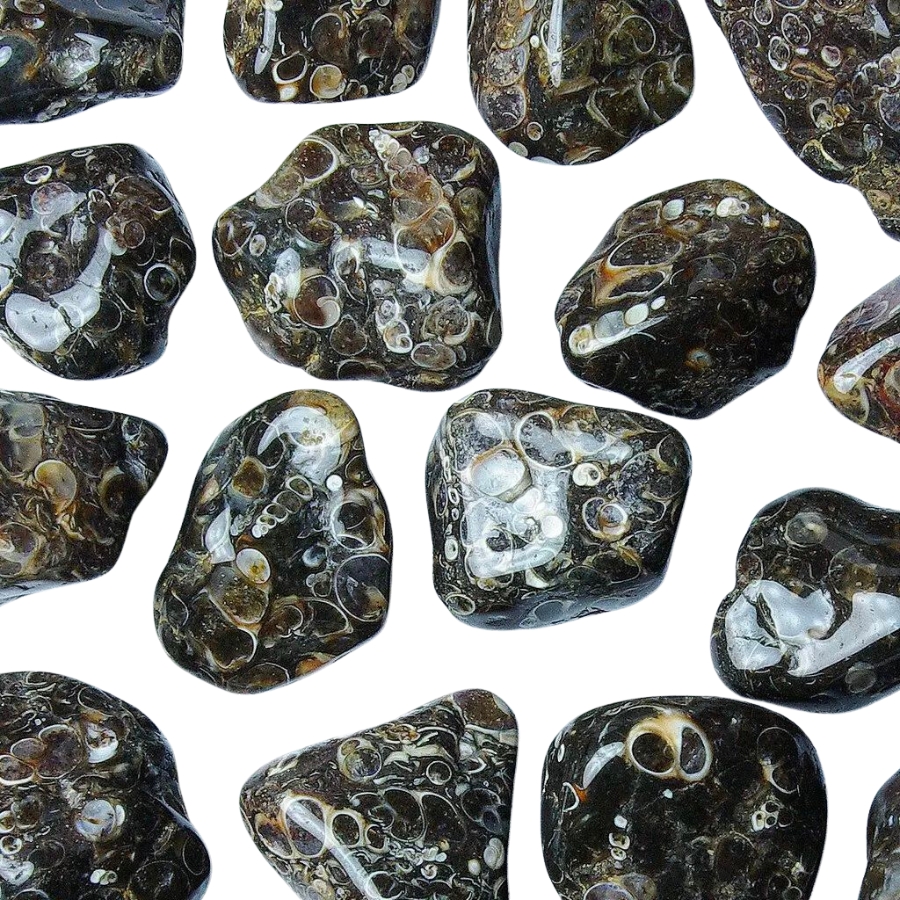
Turritella agate is not your typical agate because it’s full of fossilized snail shells! The shells belong to a creature called Turritella, a type of sea snail.
These shells are tightly packed and create a pattern that looks like a bunch of tiny, swirling towers. The background of the agate is usually a dark, earthy color, which makes the white or cream-colored snail shells really pop.
Over millions of years, these snail shells got buried in sediment and eventually became fossilized. As time went on, silica-rich water flowed through the sediment, turning it into the agate we see today.
The value of turritella agate comes from its unique blend of geology and history. More than a pretty stone, it’s a piece of ancient life preserved in rock.
Fairburn Agate
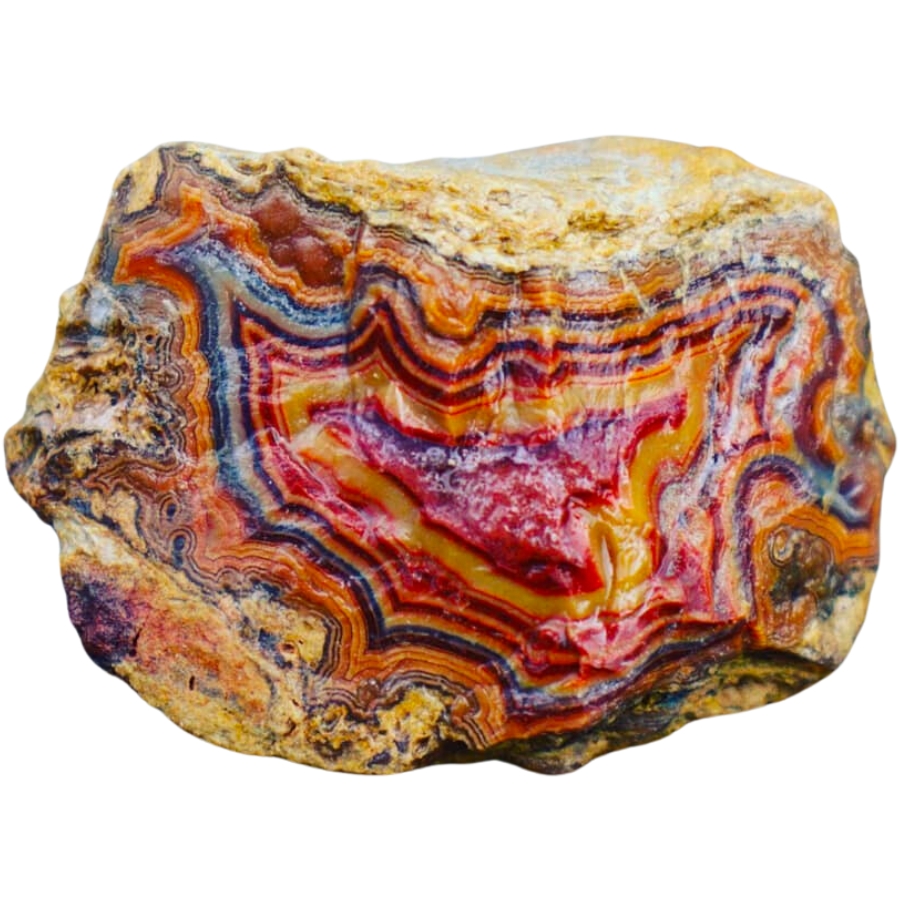
Known for its intricate patterns and bold colors, Fairburn agate is another fascinating type of agate. It usually has bands and swirls of different colors like red, yellow, orange, brown, and sometimes even pink or purple.
What’s special about these patterns is they often look like they’re in layers, creating a 3D effect. It’s like looking at a landscape made of stone.
It’s named after a place called Fairburn in South Dakota. This gives a clue about where it was first discovered.
People value Fairburn agate for the skill it takes to cut and polish it, which makes the patterns and colors really stand out.
Sagenite Agate
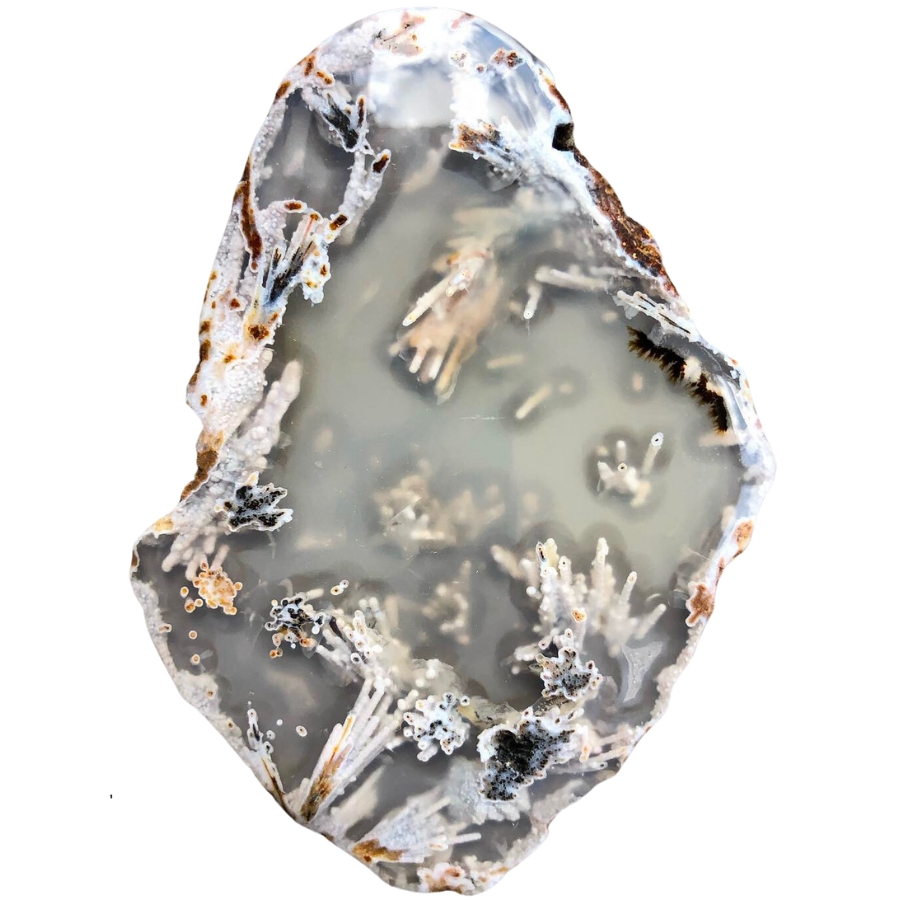
Sagenite agate has needle-like inclusions that look like tiny sprays of crystals inside it. They can be gold, silver, black, or even green, and they spread out in all directions, creating an amazing pattern.
The base of the agate is usually translucent, which lets you see these intricate needle patterns clearly.
These patterns are actually other minerals, like rutile or goethite, that get trapped inside the forming agate. These minerals grow in a crystal shape, looking like needles or hair.
Sagenite agate is often used in jewelry and other decorative items, with some people thinking that its needle patterns look like fireworks or starbursts.
Tree Agate

Tree agate, as its name suggests, looks like it’s got tiny trees or branches inside it. These tree-like patterns are usually green and spread out against a white or light gray background.
The green patterns aren’t actual trees, though. They’re made of minerals like chlorite or manganese.
Each piece of tree agate is different. You won’t find two that are exactly the same. It’s valued for its looks and it’s often used in jewelry and decorations.
The key factors in our recommendations are:
- The deep experience and understanding of our team about the area
- Recommendations from local groups and clubs
- How easy it is to get the a particular location
- Safety and potential hazards when collecting
- Weighing private and public locations
- The ability for both experienced and novice agate enthusiasts to find great samples
With these factors in mind we’ve been able to put together a fantastic list that just about anyone can use!
Kids. Beginners. Pros. Doesn’t matter. This book has become the go-to because it works for everyone.
Magy put it bluntly: “Identify rocks, crystals and minerals is so easy now!”
That’s not by accident, the photos are crisp, the callouts are simple, and the design is rugged enough to throw in a backpack without worrying. Whether it’s your first geode or your hundredth, this guide keeps the fun part simple: finding more treasures.
The Best Spots To Find Agates in Iowa

Here are our recommendations for where you can successfully find agates in the state. There are a lot of unique places to find gems in Iowa, but not all of them are good for finding agates.
Always Confirm Access and Collection Rules!
Before heading out to any of the locations on our list you need to confirm access requirements and collection rules for both public and private locations directly with the location. We haven’t personally verified every location and the access requirements and collection rules often change without notice.
Many of the locations we mention will not allow collecting but are still great places for those who love to find beautiful rocks and minerals in the wild without keeping them. We also can’t guarantee you will find anything in these locations since they are constantly changing.
Always get updated information directly from the source ahead of time to ensure responsible rockhounding. If you want even more current options it’s always a good idea to contact local rock and mineral clubs and groups
Big Creek
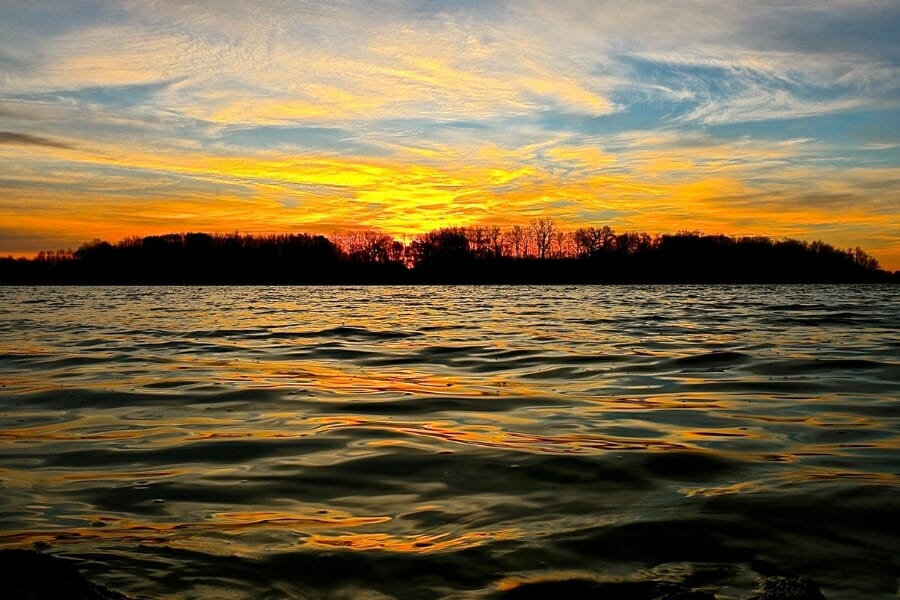
Big Creek is a popular destination for agate hunting enthusiasts due to its unique geological features and the potential for finding agates. The creek, surrounded by scenic woodlands and sprawling parkland, offers a picturesque setting for outdoor activities, including agate hunting.
One of the reasons why Big Creek is a promising location for agate seekers is the presence of glacial deposits. During the last Ice Age, glaciers moved across the landscape, carrying rocks and minerals from various regions and depositing them in their path.
These glacial deposits often contain a diverse range of stones, including agates.As the creek cuts through these deposits over time, it exposes agates and other gemstones, making them accessible to those who explore its shores.
Know the most up-to-date rules about collecting in Iowa before you bring your agate crystals back home.
Where we found agates in the Big Creek
Exploring the creek’s banks, particularly in areas where rocks and pebbles are exposed, can increase your chances of finding agates. It’s important to remember that agates are often hidden among other stones and may blend in with their surroundings, so a keen eye for patterns and colors is crucial.
Indian Creek
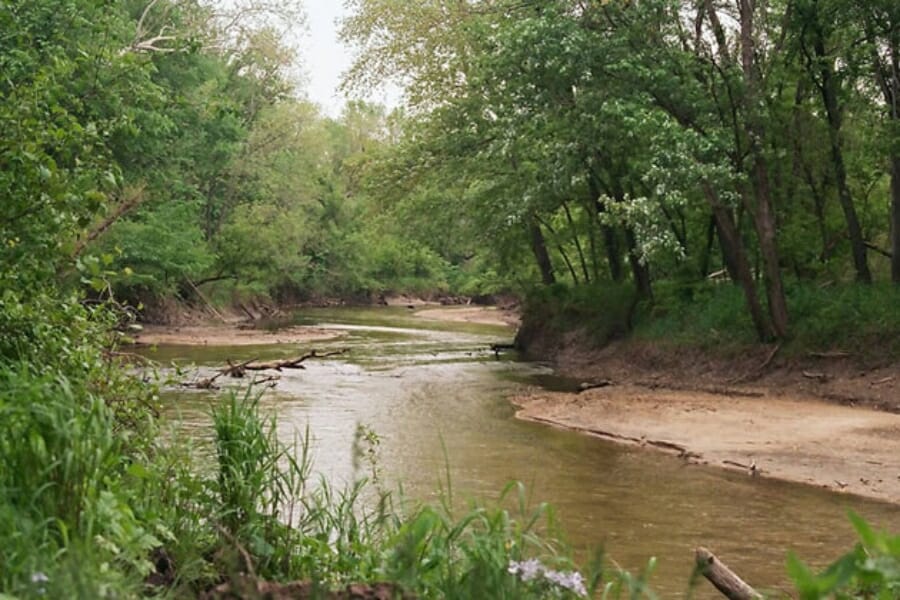
Indian Creek is a great place to go agate hunting. Its geology and the chance of finding agates draw people there. Indian Creek is in a beautiful part of nature, with many places to explore and rocks to collect.
The creek flows through rocks and minerals left behind by glaciers long ago, including agates. These glacial deposits make a rich environment for agates to grow in. As the creek winds through the landscape, it keeps revealing new gravel and rock beds where agates can be found.
Where we found agates in the Indian Creek
The best approach for finding agates at Indian Creek is to explore the creek’s banks and gravel bars. Keep a sharp eye for rocks with distinctive patterns, colors, or banding, as these can indicate the presence of agates.
Little Cedar River
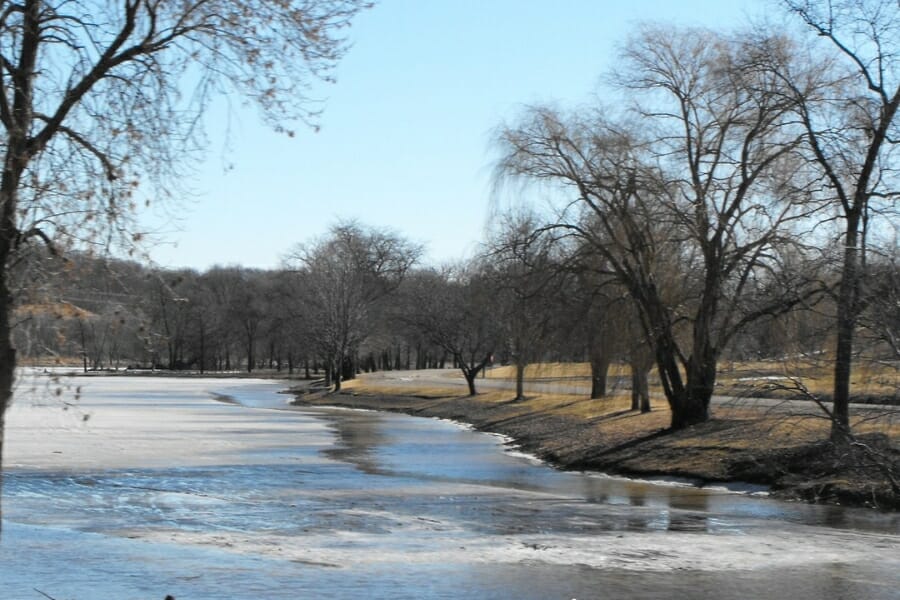
Little Cedar River is a great place to enjoy nature’s beauty and the thrill of looking for agates. With its glacial deposits and constant erosion, this river is an excellent place for people who like to look for agates to find them.
It’s an excellent place to go agate hunting because it has interesting geological features, and there’s a chance of finding these beautiful stones. The river flows through beautiful landscapes and gives people a lot of opportunities to explore the outdoors and collect rocks.
Where we found agates in the Little Cedar River
You are much more likely to find agates along the banks of Little Cedar River if you are patient, pay attention, and enjoy exploring the outdoors.
Mines of Spain
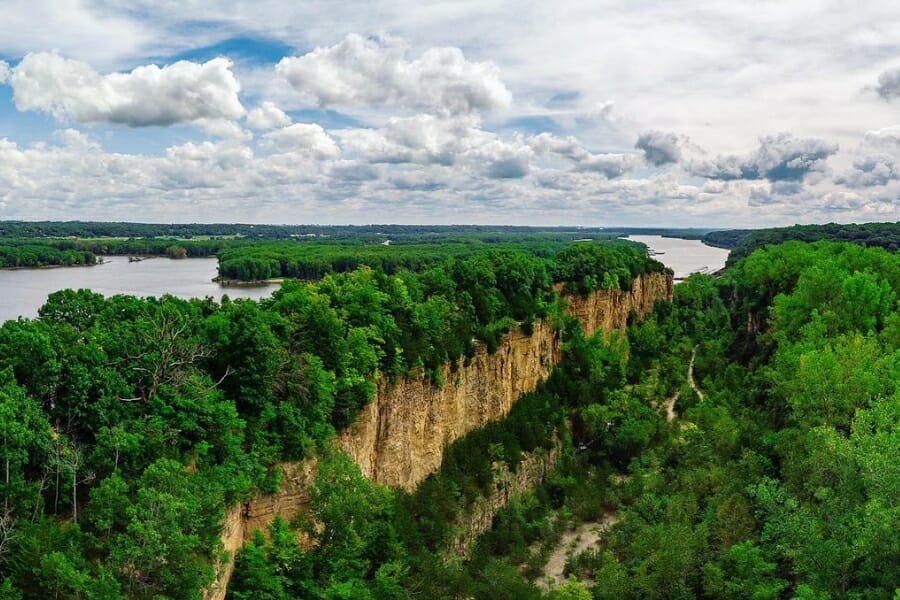
Mines of Spain, near Dubuque in eastern Iowa, is a great place to look for agates because it has various geological features and the chance of finding these valuable gems.
This large nature preserve has many different habitats, such as rough bluffs, river valleys, and wooded areas, making it an excellent spot for outdoor enthusiasts and rock collectors.
The region consists of sedimentary rocks, such as limestone and dolomite, which can potentially contain agates. These rocks were formed millions of years ago, and over time, erosion and weathering have exposed pockets and crevices where agates can be found.
Where we found agates at the Mines of Spain
Exploring the park’s trails and creek beds can produce exciting agate discoveries. The banks of Catfish Creek, which runs through the preserve, can be particularly fruitful for agate hunters.
Look for gravel bars, exposed rock formations, and areas where the water has carved its way through the landscape.
Skunk River
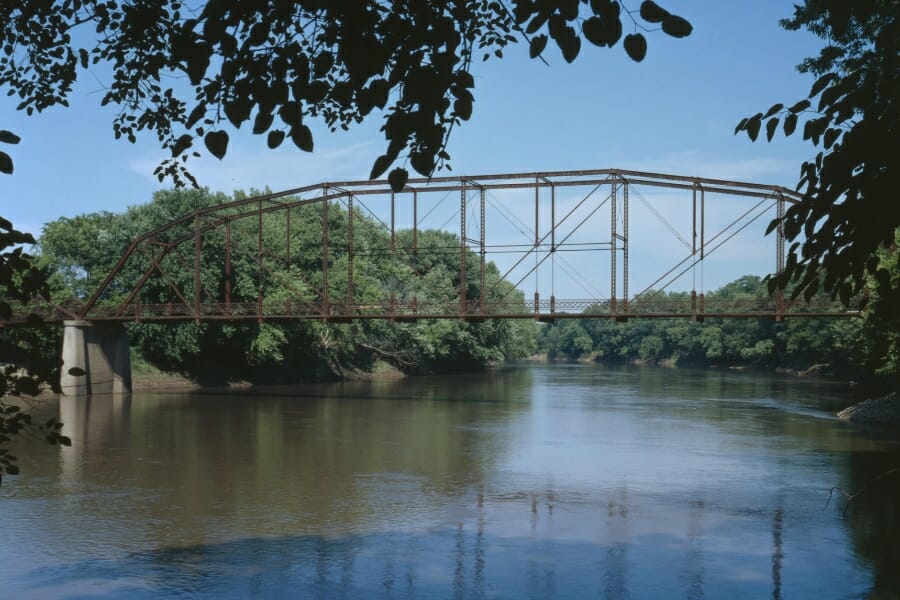
Skunk River is famous for the glacial deposits left behind when ice sheets covered the area. These glaciers moved rocks and minerals from different places and dumped them along the riverbed.
Because these glacial sediments are there, they are a good place for agates to grow. As the river wears away the land, it exposes these deposits. This makes it a great place to look for agates.
Exploring Skunk River is appealing to rock collectors and outdoor enthusiasts because of the chance to enjoy the river’s natural beauty while looking for these beautiful gems.
Where we found agates in the Skunk River
To increase the chances of finding agates along the Skunk River, it is recommended to focus on areas with exposed gravel bars and riverbanks. These locations often contain diverse rocks and pebbles where agates may be found.
Other Great Places To Find Agates in Iowa

After recommending the best locations to find agates in Iowa, we’ll tell you about some additional places where you can continue hunting. To help you, we put them in order by county.
Our recommendations by county
| County | Location |
| Adair | Orient washes and clay hillsides |
| Benton | Cedar River Bluffs |
| Butler | Shell Rock gravel pits |
| Clayton | Guttenberg washes and cut banks |
| De Moines | Burlington regional creek beds |
| Henry | Mount Pleasant |
| Henry | New London regional stream beds, cuts, and banks |
| Keokuk | Harper Quarry |
| Keokuk | Kaser Quarry |
| Lander | Iowa Canyon Mine |
Additional areas you can find agates
Iowa is big, so we want to ensure your search works. Here are some familiar places to find agates.
Quarry
There are often many kinds of rocks in quarries, each with unique qualities. This variety makes it more likely that you will find agates with different colors, patterns, and shapes.
Agate hunters can look in different parts of the quarry for telltale signs of agates, like banding or unique inclusions, by carefully examining exposed rocks.
When rocks and minerals are taken out of quarries, these holes are exposed. This gives collectors a better chance of finding agates. Fresh exposures also give a unique chance to see how the agates formed in their geological setting.
Streams and creeks
Streams and creeks are great places for agate collectors to look for these beautiful stones because they are always changing and offer a dynamic environment. These waterways are great places to look for agates because they are important to how they form and get to where they are found.
Agates form inside holes in rocks. They can be moved downstream by the flow of water or by natural forces. As creeks and streams flow through different types of land, they expose gravel bars and banks where agates often end up.
Collectors have a better chance of finding agates that were carried by the water and dropped in these places if they look hard enough.
Washes and ravines
Agate collectors can find these beautiful stones in great places like washes and ravines. These natural formations, which are usually found in dry or desert areas, provide a unique place for agates to form, stay safe, and be found.
When it rains a lot or there are flash floods, fast-moving water cuts through the landscape and moves rocks and minerals. This erosion brings to light places where there are agates that might have stayed hidden.
When exploring washes and ravines, you have to pay close attention to details and watch what you do. Collectors should look at exposed surfaces, pebbles, and gravel bars for agates with patterns, colors, and bands that make them stand out.
Common Agate-Hunting Questions
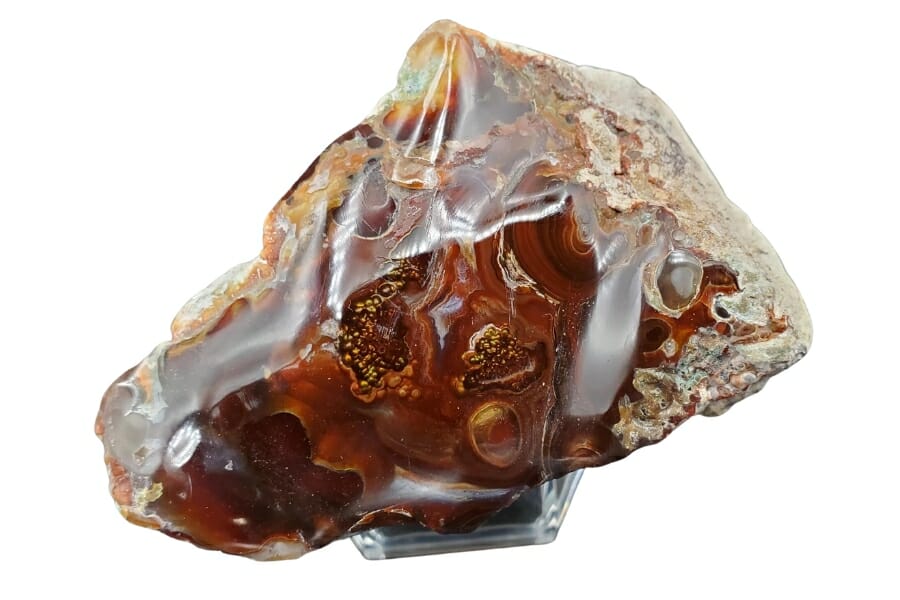
People who go to Iowa to look for agates often ask the following questions, and it’s essential to know the answers.
Is it illegal to collect agate in Iowa?
Iowa is an excellent state to look for agates if you do it right. It’s best to follow the rules in a public place. Before you go on private land, have permission to do so.
The Best Places To Buy Agates In Iowa

Not all agate hunters like spending all day looking for specimens outdoors. Sometimes all you need is a pretty agate to add to your collection or a nice piece to display. Here’s a list of where you can buy agate crystals in Iowa.
- Ancient Ways – 2420 University Ave, Des Moines, IA 50311
- Dorie’s Crystals and Things – 101 Pearl St, Council Bluffs, IA 51503
- Ema’s Elegance Specialty Stones – 811 Story St, Boone, IA 50036
- Sacred Designs by Spirit – 33391 290th St, Shell Rock, IA 50670
- Windy’s Sublime Healing – 5005 Douglas Ave Ste 105, Des Moines, IA 50310
If you have any recommendations for our list please leave a comment below!



